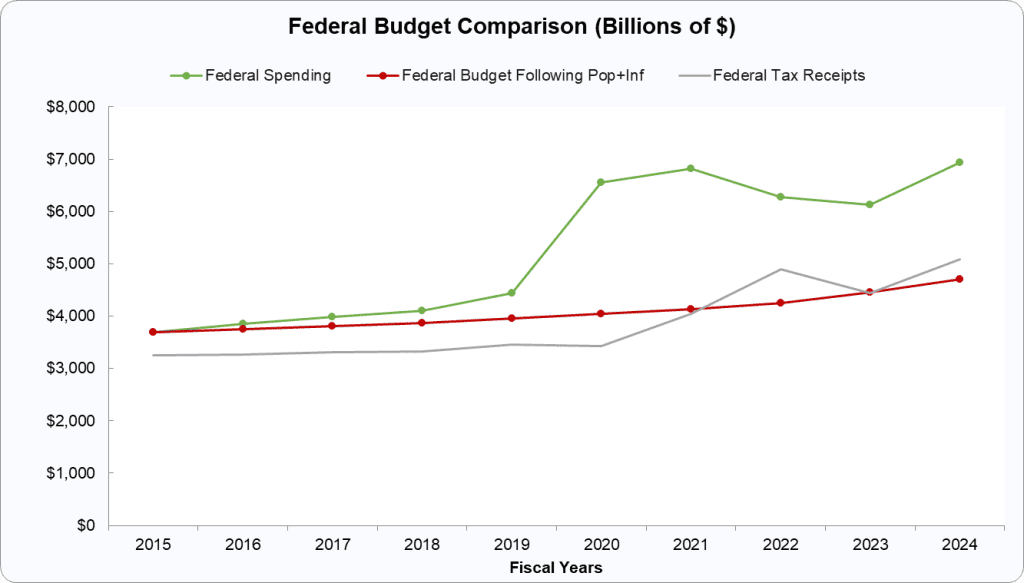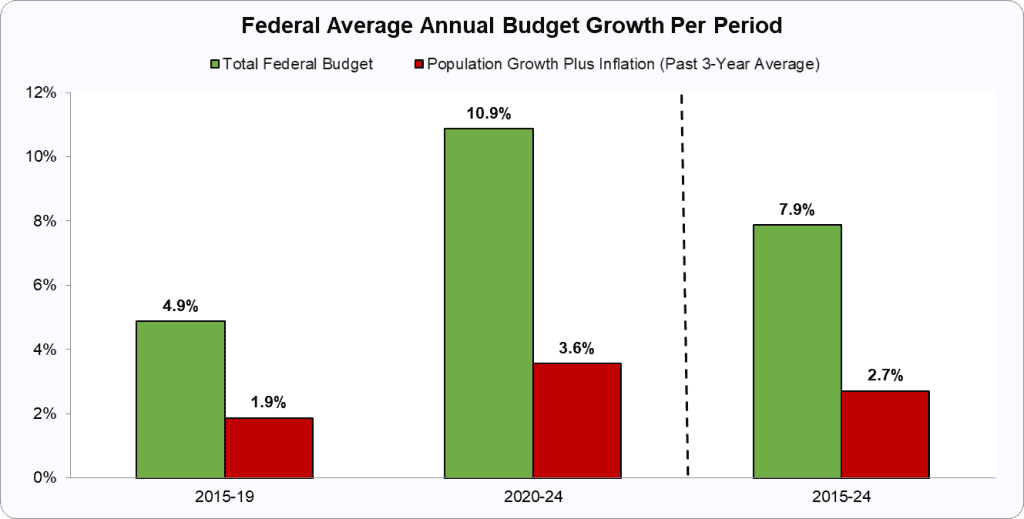Spend Less, Prosper More: Sustainable Budgeting and Faster Growth Work Best
How to keep politicians from bankrupting the country.
Hello Friends!
Governments are spending faster than families can earn from D.C. to your local legislature. That debt-fueled spree is robbing opportunity from future generations. But there’s a proven, pro-growth alternative—sustainable budgeting. In my latest article on X, I show how it works, what it could’ve saved you last year, and why we must act now.
Check it out!
Spend Less, Prosper More: Sustainable Budgeting and Faster Growth Work Best
More of your paycheck is being spent to fund governments that have lost control of their checkbook, funded by you. Whether saving for retirement, paying off student loans, or building a business, you're working harder to tread water. And it's not because you aren’t doing enough—it’s because Washington, and many state and local governments, are doing too much.
Government overspending isn’t new, but it has exploded in recent years. Across nearly all levels nationwide, government spending is growing far faster than what most families can afford to fund. The result is an economy weighed down by taxes, debt, and inflation, robbing Americans of opportunities they earned.
This isn’t just about the headlines in D.C. As Congress debates a new reconciliation bill that could make the Trump tax cuts permanent, it’s flirting with another round of delayed spending reductions. In other words, another bill without brakes. And that means even more national debt in a time of historic deficits. It doesn't have to be one-for-one, as there should be a net tax cut that will drive growth but it should be met with spending less.
There’s a better way: faster growth and sustainable budgeting.
The idea is simple—and moral: the economy should grow faster and government should not grow faster than the people’s ability to pay for it so people can prosper more. That’s why we define sustainable budgeting as limiting annual budget growth to no more than the rate of population growth plus inflation.
The data are damning. According to the Sustainable Budget Project by Americans for Tax Reform, federal spending surged by 88% from 2015 to 2024, while population growth plus inflation rose 27.6%. If Congress had followed a sustainable budget rule during that period, Washington would’ve spent $2.2 trillion less in 2024 alone, and the national debt would be $1.8 trillion lower. Instead, it’s barreling past $37 trillion, with no end in sight.
States haven’t fared much better, even with their balanced budget requirements. Their budgets expanded by 54.2%—nearly twice the sustainable pace. If state lawmakers had stuck to reasonable spending growth, taxpayers would have saved $328 billion in 2024 alone.
Combined, federal and state overspending cost Americans an excessive $2.5 trillion in just one year. This would be higher if we did this for all local governments. That’s money that could’ve gone into your retirement savings, your mortgage, your child’s education, not to mention actual debt reduction.
Thankfully, some states offer a path forward. Using NASBO data, Alaska, Colorado, North Dakota, and Wyoming have kept their entire budgets within sustainable growth rates. Louisiana, Massachusetts, Mississippi, Montana, Ohio, and Oklahoma have done so within state-controlled funds (excluding federal funds) over the past decade. Their approaches show what’s possible when spending restraint becomes law or habit, not just rhetoric.
Colorado’s Taxpayer’s Bill of Rights (TABOR) provides a useful example. It caps spending growth at the rate of population plus inflation and returns surpluses to taxpayers. But over time, progressives watered it down. To be more effective, TABOR should return to its original form—and use surpluses not for rebates, but for lowering tax rates permanently.
The approach of limited government spending and using surpluses to reduce taxes should be the national model. In Congress, one of the best next steps would be to pass what I’ve called a “Let Americans Prosper” agenda.
It begins by making the 2017 Tax Cuts and Jobs Act permanent and improving the tax system, ensuring low tax rates with broad bases that fuel growth. Meanwhile, spending must be restrained.
If we limited federal budget growth to just 1% per year and achieved just one percentage point more in real GDP growth (say, from 1.5% to 2.5% with lower taxes, less regulation, and more free trade), we could balance the budget by 2031. Or, by capping spending at population plus inflation, we’d achieve balance within about a decade, without a tax hike.
Milton Friedman wisely noted that the real problem of government is not how much it taxes but how much it spends. Every dollar spent beyond our means today is stolen from our children’s tomorrow. This is why sustainable budgeting isn’t a dry accounting rule—it’s a declaration of principle. It says prosperity doesn’t come from printing money or growing government, but from creating an environment where individuals, families, and businesses can thrive.
It’s time to break the cycles of boom, bust, and bailout created by governments. Americans don’t need more programs or promises. They need a budget they can afford—and a government that finally learns to live within its means. Let’s stop bankrupting the future. Let’s let people prosper.
📉 Fewer taxes.
📈 More prosperity.
Let’s make budgeting sane again—and let people prosper!









